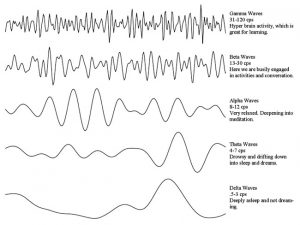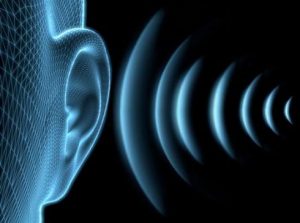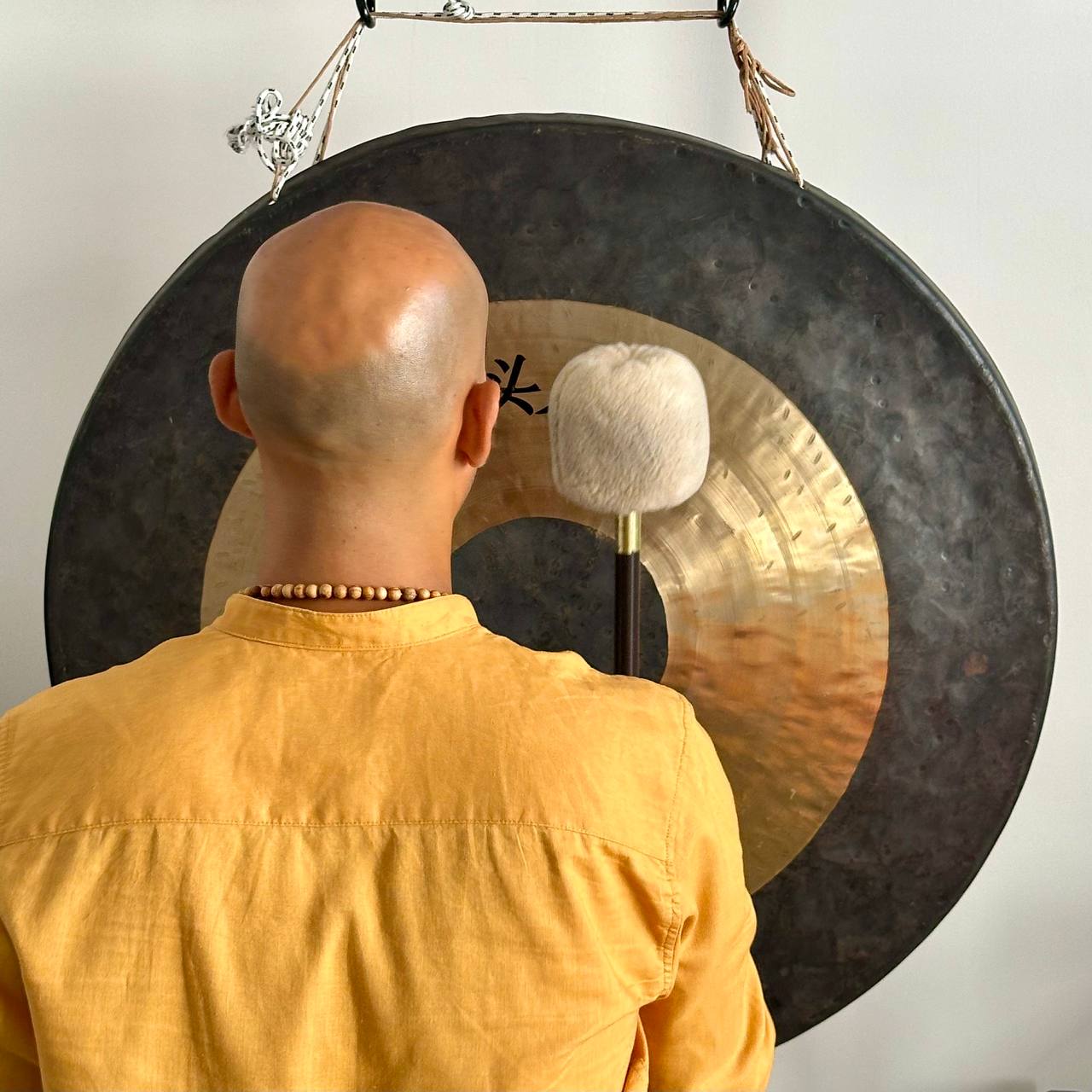Your cart is currently empty!
Over the years there has been much discussion about how a frequency range determined by a musical symphony or simply by speaking in a suitable tone of voice, can cause vibrations that can also be perceived by the DNA, with the possibility of reprogramming it. Even today discordant opinions are expressed by researchers and musicologists on the subject, some of them are sceptical, others less so. We will try to explain what this is all about here in order to provide an in-depth picture of the whole process and the complex man-sound relationship.
The vibrations, which propagate in the air (or in another elastic medium), reach the ear’s auditory apparatus which, through a complex internal mechanism similar to that of a spectrum analyzer, perceives frequencies in the range between about 16 and 16,000 Hz and creates an “auditory” sensation related to the nature of the vibration.
Our brain is an advanced data processing centre: it can process and store an incredible amount of information in a very short time and has the task of coordinating the activities of the various organs and inducing responses as a result of external stimuli. It is therefore responsible for receiving and processing both external and internal stimuli by inducing responses through a feedback mechanism and beyond.
Like all other organs, the brain has its own variable frequency, i.e. a frequency that varies according to the interactions that occur: it can be excited or inhibited depending on the situation, which causes an increase or decrease in its own frequency. One of the peculiarities of our brain, and which differentiates it from all the other organs of our body (from a vibrational point of view), is its sensitivity to any instrument that emits frequency waves because it tends to tune naturally with the external signal; this means that the vibrational frequency of the brain can be easily influenced and modified simply by listening to certain frequencies.
Specifically, our brain uses frequency ranges that are grouped through 5 letters of the Greek alphabet: ALPHA, BETA, THETA, DELTA, GAMMA, within which a further distinction is made between BETA – BETA ALTE and DELTA – DEEP DELTA. To the different activities of our brain corresponds the production of different types of brain waves, and vice versa by exposing our brain to a source that produces these waves we can induce certain states of consciousness. We can observe in the following diagram how the frequency of the different brain waves is graphically represented:

We can easily see how, as the Hertz are lowered, a state of greater relaxation is achieved. Let’s go to analyze the characteristics of the different Waves/States of consciousness:
– ALPHA (8-12Hz): these are the typical frequencies of relaxation and meditation, this state of consciousness favors all the activities that we can define “Restore” as digestion and mental relaxation, favoring the receptivity of the mind. Normally we reach this state as soon as we wake up or just before falling asleep.
– BETA (12-40Hz): these are the frequencies at which our brain vibrates in a waking state and activity, i.e. when we are performing any activity that requires an effort of concentration, from the most trivial activity such as reading, to the most complex as could be the performance of a particularly demanding university exam.
– THETA (3-8Hz): they are the “waves of the artist” because they favour a state of inspiration, THETA is a state of consciousness that allows us to connect with “Other dimensions”: what the inspired artist does is to connect with another dimension and then come back and try to tell through his art what he perceived. Theta is the frequency at which the athlete’s brain vibrates in a competitive trance. These waves are also associated with light sleep and deeper meditation.
– DELTA (0.5-3Hz): these waves are associated with sleep, Delta is the state of consciousness that promotes cell regeneration and manages the restoration of balance in our body. If we are not able to reach this state of consciousness efficiently, our body undergoes a faster process of deterioration. After facing a demanding day, it is essential that our brain enters Delta in order to allow the psycho-physical restoration of the whole organism.
– RANGE (40-100Hz): although they are the highest frequency I present them as the last in the list because they are particular waves that due to the high frequency our brain is unable to sustain for a very long time and are associated with precognition events, brain storming, moments of high voltage and high level information processing.
As we lower the frequencies at which our brain works, our perception of the reality around us changes: everything seems slower and our ability to interact increases. As our perception of time dilates, the possibilities to interact and process data increase. Think of a sportsman who during the race can reach the Theta state: the movements of the opponents will be slower and he will have the time to process different solutions in the same time frame that the opponents will perceive much faster.
HOW SOUND CAN HELP IN THE BRAIN SYNCHRONIZATION PROCESS
As Riccardo Tristano Tuis explains in his book 432 Hertz: The Musical Revolution: “The feverish rhythms of modern life and the related problems of survival, added to diet, noise and musical pollution, lead the body and brain to ‘stock in an increasingly disharmonious frequency, which researchers have called ‘neural decoherence of the Beta state’”. This state, if permanent, does not allow a restful sleep (insomnia) necessary for the good functioning of the organism. The Homo Industrialis and, above all, the Homo Technologicus, is less and less tuned to the coherent brain frequency bands of the Alpha state (calm and receptive mind, acute concentration and vigilant relaxation), the Theta state (deep meditation, creative inspiration, REM sleep) and the Delta state (dreamless sleep and cell regeneration), “fossilizing” chronically on the Beta state band (alertness and concentration) overexerting the nervous system and endocrine glands responsible for the survival mechanism “Fight and run”.
This perennial state of alert of modern man, which today is called “Stress Syndrome”, is the neuroendocrine effect of this disharmony of non-biocompatible frequencies present in the human ecosystem that makes him sick and does not allow him an optimal cognitive process”.
We can therefore understand that what matters most in terms of quality of life and improvement of our psycho-physical state is balance. The balance not only between the frequencies of our brain (which as we have seen can be somehow induced) but of our being in general, trying to have a lifestyle that can allow our body to perform its functions in total efficiency.

According to Dr. Victor Beasley – a member of the research group at the US University of the Trees – “each cell has a magnetic field that interacts with those of similar nearby cells, thus giving rise to the magnetic field of a particular system within the human body. The vibrations of the various atoms thus create a resonance and aggregate in cells with similar atoms. It can happen that for any cause, these notes of our inner resonance are out of tune, generating a malaise. We can give the “A” back to our body through meditation and music. In this way we restore order in the body.
Metaphorically the human body is just a score, I would say a symphony, so perfect is it, that God or nature, if you prefer, has written. Therefore it may happen that some out of tune notes disturb the perfection of musical writing. So we need a tuner, a conductor, a guide, call it what you want, something that brings order to the orchestra.
For example if our brain is subjected to a rhythmic stimulus (like a percussive sequence) it will automatically try to synchronize its brain waves to match the frequency coming from the stimulus. Recently it has been noticed that drumming that is practiced in many cultures is played at about 4.5 beats per second. People who get carried away by this constant beat can easily go into a state of trance. 4.5 beats per second corresponds to 4.5 hz, i.e. the state of Theta brain waves. This is called “Frequency Response”.
The most frequent forms of ‘brain transport’ are binaural beats, monotonic rhythms and isochronic tones. The beats and tones used for this practice are created by sending different tones to each ear, so that our brain perceives the difference between these two tones. For example, if I were to send a 220 Hz tone to the left ear and another 210 Hz tone to the right ear, the brain would perceive a 10 Hz tone and this would cause our brain’s brain waves to vibrate in the Alpha state for a synchronization effect.
BINAURAL BEATS: Binaural beats are by far the most common, though not the most effective, method of brain transport. The reason for its popularity is simply due to the initial interest and research of researchers such as Robert Monroe of the Monroe Institute. Since tones have to be created in the brain, headphones are necessary to ensure the perception of binaural beats. Otherwise they would become monophonic beats even before they reach the brain; some methods are better than others depending on the application and the expected result. Binaural beats have an approximate range of 0.235 to 26.25 hz. If this value is exceeded, the binaural beats would become too large to be perceived by the brain.
MONAURAL Rhythms: Monaural rhythms are similar to binaural beats in that they are derived from a combination of two signals. The difference is that in monaural rhythms the signals combine in the air before they reach the brain, while binaural rhythms are created in the brain itself. Usually monaural rhythms are more effective than binaural rhythms, even if they become ineffective under 4hz. Also, monaural beats require a very quiet environment to be heard.
ISOCHRONIC TONES: Isochronic tones are similar to monaural tones in that they are formed outside the brain, but instead of being a sinusoidal pulse like monaural beats, isochronic tones are individual impulses of the same tone. They are considered the best in the brain entrainment process in most entrainment applications and have the added advantage that they do not require listening by both ears. This is particularly useful for individuals with hearing impairment or loss in one ear. These tones can also be used to work separately on each or both hemispheres as they require listening in one ear only. However, like monaural tones, isochronic tones cannot be used below 4hz and generally must also be stronger than other beats to be effective.
It should be specified that all brain waves are present in the brain at all times, which surround a dominant state. That is, if you are in an alpha state for example, this does not mean that you are only experiencing alpha waves, but rather that alpha waves make up the largest percentage of brain waves in the current state.
Binaural, mono-aural, and isochronic rhythms are just some of the various methods that are used today by humans to find harmony with themselves. Using certain frequencies in a silent environment, it is possible to carry out meditation sessions, autogenous training, E.F.T., pranotherapy and other inner research techniques that could even help to repair and reprogram our DNA. In fact, there is a wide range of vital sound frequencies that have shown an extraordinary and beneficial power on human physiology and it has been shown that each vital frequency in resonance with our brain waves has a physiological effect on our body; often even the overlapping of two or three frequencies in solfeggio between them can have surprising beneficial effects.







